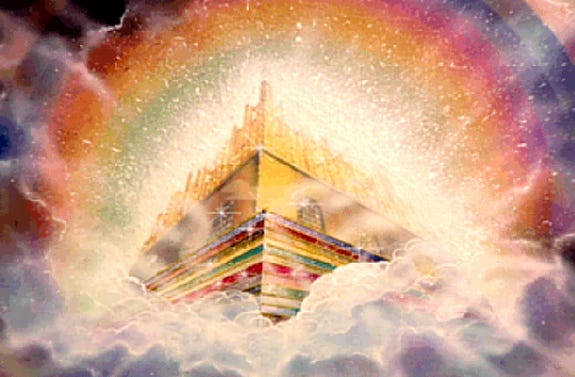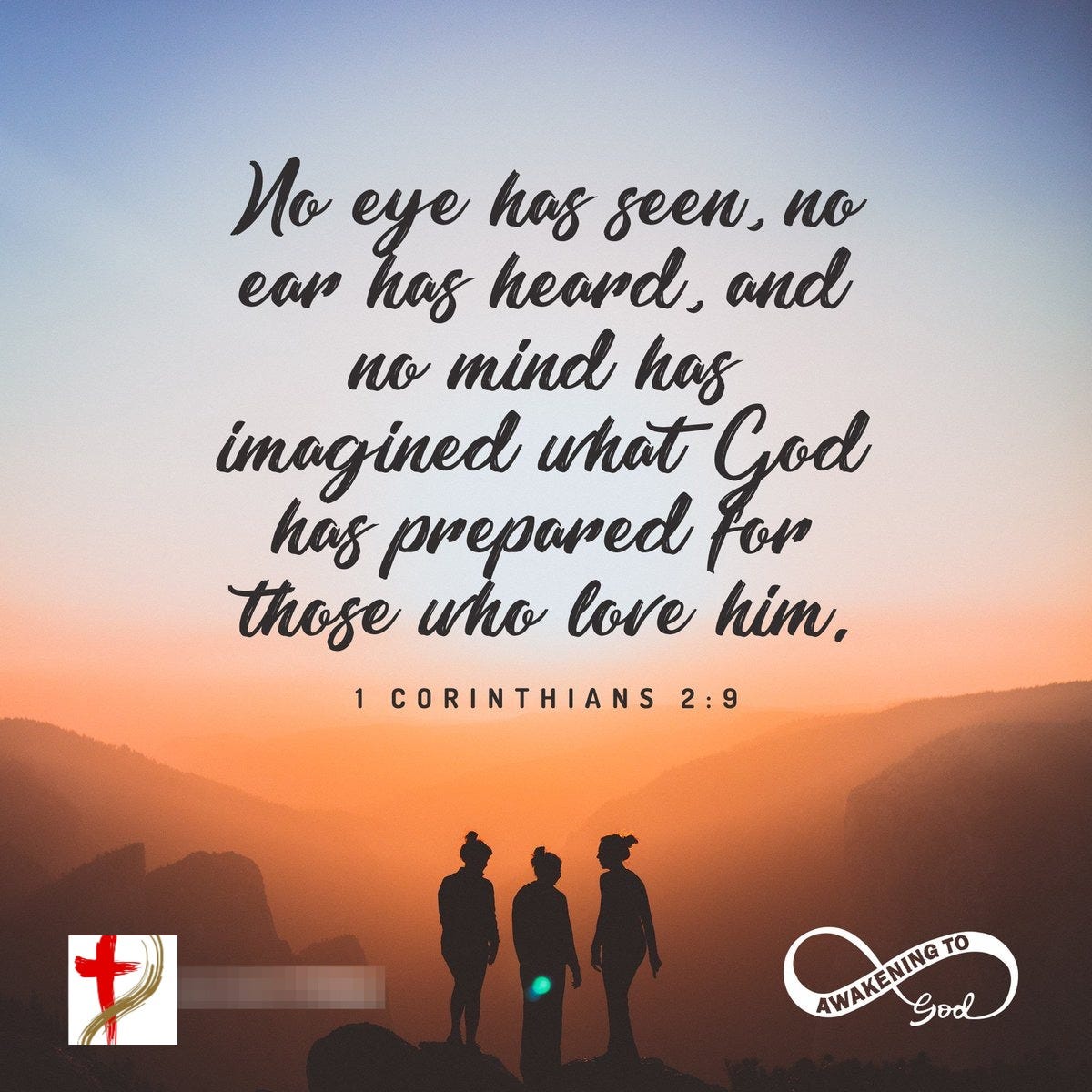Better Than We Can Imagine: What Heaven Is Really Like
from an exposition of Revelation 21:9-22:5
What is heaven like? Ever wonder that?
Pop culture usually gives us hazy clouds, soft-focus light, and angels strumming harps while we float around doing—well, who knows what. Movies like It’s a Wonderful Life turn heaven into a kind of celestial HR department, sending down angels-in-training to help us out. Even church songs can make it sound like a big family reunion with God barely mentioned.
That vision isn’t just thin—it’s wrong. The Bible’s description of heaven — really New Jerusalem — is richer, stranger, and more thrilling than any of our clichés. And Revelation 21–22 gives us one of the few direct glimpses into it.
But here’s the catch: those descriptions are symbolic. They don’t give us literal blueprints for the afterlife. They give us images—jewel-encrusted walls, golden streets, a cube-shaped city the size of half a continent—not because heaven is those things, but because it’s better than we can imagine. The symbols stretch language until it breaks.
Paul says it straight: “No eye has seen, no ear has heard, and no mind has imagined what God has prepared for those who love him” (1 Cor. 2:9).
Heaven Comes Down
First, let’s clear up a misconception: heaven is not “up there.” It comes down.
John sees the New Jerusalem “coming down out of heaven from God” (Rev. 21:10). That’s crucial. We don’t climb up to God. He brings His kingdom down to us. It’s the opposite of the tower of Babel that people were building up to heaven. Be wary of people or movements that claim they can bring heaven on earth, build a “workers’ paradise,” utopia, a brave new world, if only we have the right government. They will bring hell on earth. For heaven, we have to wait on God to bring it down.
Twenty-One Pictures of the Unimaginable
Revelation paints heaven in twenty-one symbolic snapshots—a number that’s three times seven, the Bible’s favorite number for fullness and perfection. Taken together, they make one point: heaven is as vast, beautiful, safe, and God-saturated as human words can suggest.
Here are just a few.
Bridal. John is told, “Come, I will show you the bride, the wife of the Lamb” (21:9). Heaven is marital joy, covenant love, eternal union with Christ. It is a relationship of love.
Enormous. The city is 12,000 stadia wide, long, and high—roughly 1,400 miles each way. That’s half the width of the U.S., but cube-shaped. A literal cube stretching into orbit isn’t the point. The cube matters because the Holy of Holies in the temple was a cube. Now the whole city is God’s dwelling place. Heaven is all Holy of Holies.
Accessible. The city has twelve gates, facing every direction, named for Israel’s tribes. It’s open to people from every nation, tribe, and language. The gates never close because no threat remains. Heaven is the safest place imaginable, without locks, alarms, or fear.
Splendid. Foundations glitter with sapphire, emerald, and amethyst. Walls gleam like jasper. It has both the beauty of pure, 24-carat gold and pure glass. That’s not naturally possible — to be both like gold and transparent like glass. What it means is that it has was is splendid about gold and glass combined. How? We’ll have to wait and see. These aren’t construction specs. They’re word-pictures of beauty that makes every earthly jewel look like costume jewelry.
God-Inhabited. John notices something missing: there’s no temple. Why? Because God and the Lamb are the temple. Heaven doesn’t need a sacred building because the whole city is sacred. God’s presence fills every square inch.
Illuminated. No sun, no moon—only the glory of God and the light of the Lamb. God Himself is what lets us see.
Restorative. Flowing through the city is “the river of the water of life,” clear as crystal, nourishing the “tree of life” on both banks. Its leaves heal the nations. Wars, racism, exploitation, resentment—gone. Diversity doesn’t disappear, but hostility does. Humanity lives in peace.
Beatific. The climax: “They will see his face” (22:4). That’s it. That’s heaven. The vision of God Himself—His beauty, majesty, holiness—satisfies every desire of the soul. Theologians call this “the beatific vision.” It’s what you were made for.
Beyond Imagination
Taken literally, Revelation’s city sounds bizarre—a jewel-crusted cube taller than the International Space Station. Taken symbolically, it’s breathtaking.
The point is not the architecture. The point is that heaven is bridal, heavenly, enormous, splendid, holy, safe, irrigated, restorative, radiant, royal. Every image presses language to say the unsayable. Every picture breaks the limits of human imagination.
And all of it centers not on us, but on God. Heaven is not a reunion hall with God wandering in as an afterthought. Heaven is God’s unmediated presence—His glory, His favor, His face shining on His people forever.
That’s why John ends with the simplest summary: “They will reign forever and ever” (22:5). Servants become heirs. Children of God reign with Christ in a world without end.
The Real Question
So, what is heaven like? It’s not “up there.” It’s down here—renewed, restored, radiant. It’s bridal joy, city security, divine glory, eternal light. It’s better than Milton’s poetry, better than Dante’s love, better than any song or movie could capture.
Or, to put it in Paul’s words again: no eye has seen, no ear has heard, no mind has imagined what God has in store for those who love Him.
Which leaves us with just one question—the only urgent question: Do you love Him?
For the full exposition of Revelation 21:9-22:5, listen:
Covenant Reformed Baptist Church is Danville’s & Caswell County’s Reformed church.




